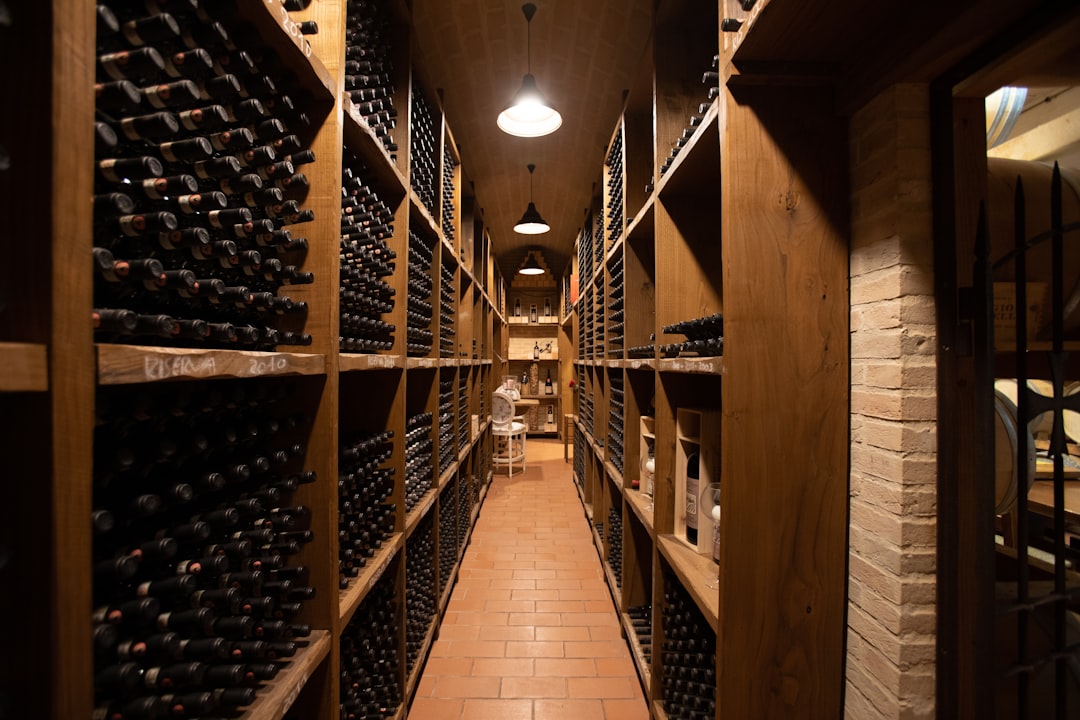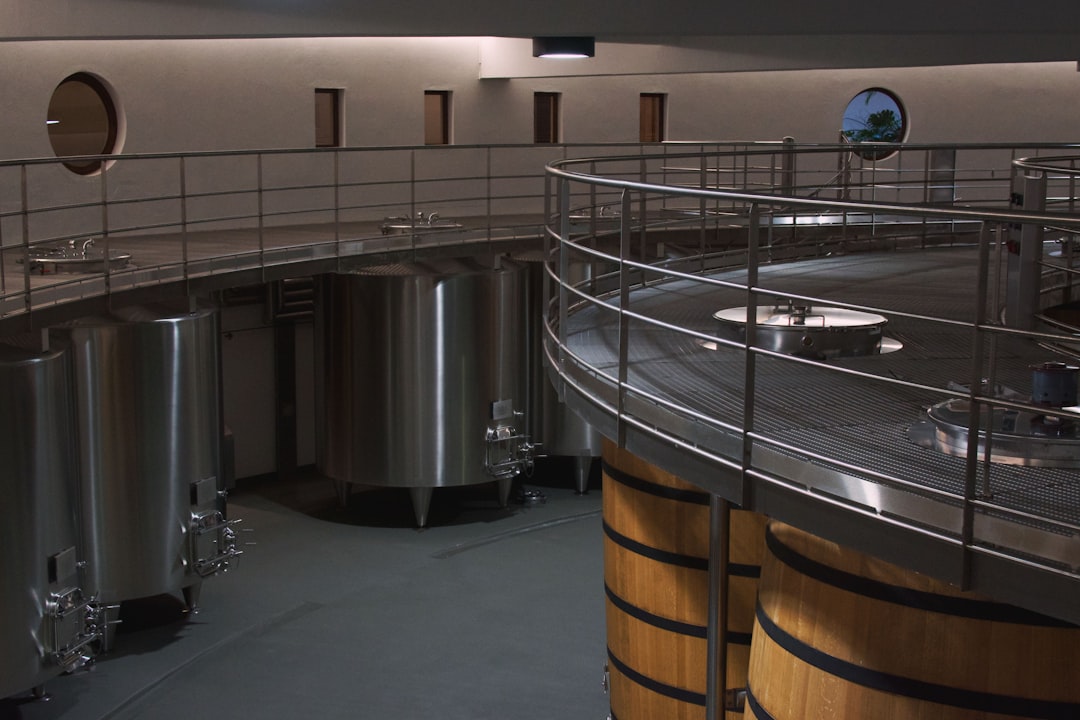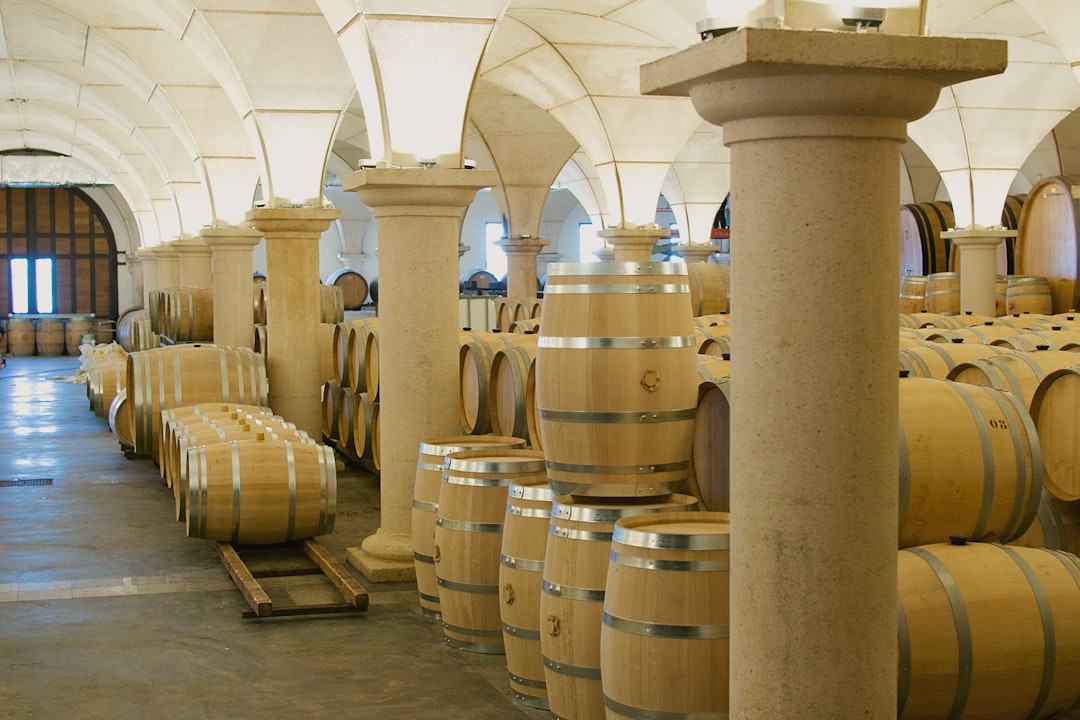

Engage prospects with a scan and streamline customer engagement with FREE QR code marketing tools by Sona – no strings attached!
Create a Free QR CodeFree consultation

No commitment

Engage prospects with a scan and streamline customer engagement with FREE QR code marketing tools by Sona – no strings attached!
Create a Free QR CodeFree consultation

No commitment
The evolving landscape of wine storage facilities demands operational efficiency and an exceptional customer experience. Wine collectors and enthusiasts now expect seamless service, airtight security, and climate precision, challenging facilities to differentiate themselves in a crowded marketplace. Yet, reliance on manual touchpoints such as paper inventories and printed materials often results in missed engagement opportunities and operational friction.
This challenge intensifies when high-value prospects visit or inquire but never fully enter the sales funnel, leaving their interest untracked and follow-up impossible. Lost opportunities occur as potential clients ready to invest in premium services go unnoticed due to process breakdowns. The result is a fragmented buyer journey where interest lacks visibility and engagement is difficult to measure.
QR codes offer wine storage facilities a strategic way to modernize packaging, streamline customer interactions, and connect physical assets with digital solutions. With a single scan, facilities can deliver instructions, authenticate wine provenance, enable secure reordering, and provide instant access to digital wine inventories, eliminating the need for apps or lengthy sign-up processes. In short, QR codes turn packaging, lockers, and on-site signage into digital entry points that accelerate service and unlock data-driven growth. Explore the Sona QR product overview to see these capabilities in action.

Wine storage facilities frequently struggle with manual, disconnected inventory lists or outdated, paper-based systems. When staff and clients rely on handwritten forms or legacy spreadsheets, valuable bottle-level data is lost, service slows down, and the collector experience suffers. Mislabeling, duplicate entries, and missing provenance details can lead to operational bottlenecks and frustrated clients.
QR codes allow every bottle, crate, or label to become a reliable digital touchpoint that influences consumer preferences. The shift from static paperwork to dynamic scanning not only increases accuracy but also simplifies complex tasks like auditing, retrieval requests, and climate reporting. Here is how to build a future-ready workflow that replaces analog friction with fast, trackable actions. Explore product packaging ideas.
Adopting QR code-enabled systems mitigates the high costs of missing data, improves client satisfaction, and reduces the risk of untracked prospects. Facilities using solutions designed for this purpose can automate code creation, aggregate scan data for future marketing, and continuously optimize inventory practices based on real usage. The result is a connected ecosystem where every scan enriches your understanding of what clients need and when they need it.

Behind the scenes, many wine storage operators grapple with low visibility into client behaviors. Visits go unlogged, feedback is sporadic, and crucial engagement moments are lost. This lack of visibility can lead to missed opportunities, where high-fit prospects or engaged collectors never experience the full breadth of services that would retain their loyalty and increase their lifetime value.
The introduction of QR codes addresses these obstacles and brings several specific benefits that align with daily workflows. By turning packaging, labels, signage, and paperwork into scannable gateways, facilities unlock instant actions and durable monitoring that paper systems cannot deliver.
Facilities that move beyond generic website analytics to implement account-level QR tracking can personalize experiences in ways static processes never could, and align results with Sona offline attribution. From proactive climate alerts to curated offers for premium collectors, QR infrastructure anchors a modern service model that is responsive, data-informed, and client-centric.
Data fragmentation is a persistent issue in wine storage. Inconsistent formats and disjointed systems hurt personalization, drive up support costs, and complicate compliance. Selecting the right QR code format for each touchpoint helps unify these experiences while ensuring clients land where they can take immediate action.
A mix of formats often works best, depending on the task and context. The following are commonly effective for wine storage facilities, with brief guidance on when to deploy each.
Dynamic QR codes are particularly valuable in wine storage because bottles change hands, service menus evolve, and compliance policies shift. With dynamic links, teams update content centrally and keep every scan useful without reprinting labels or reissuing packets. That flexibility translates to lower cost, higher accuracy, and fewer client headaches.
Many facilities struggle to pinpoint exactly where prospects drop off or where engaged clients become anonymous. A strategic QR deployment plan maps your highest-traffic touchpoints and turns each into a moment of value delivery and data capture. When you know who scanned, where, and why, you can segment intelligently and respond with precision.
Focus on placements that intersect with key decisions: onboarding, verification, retrieval, renewal, and upgrade. These are the interactions most likely to influence satisfaction, retention, and lifetime value.
By embedding QR codes wherever client interaction is frequent, facilities close engagement and attribution gaps. Prospects and customers no longer disappear into analog processes, and the data you gather fuels smarter inventory practices, more relevant offers, and faster service cycles.

A recurring frustration for facility managers is the inability to capture engagement signals that predict upsell, cross-sell, or risk of churn. When interactions happen offline, they often leave no digital footprint. QR codes change that, making critical touchpoints measurable and actionable while delivering immediate value to the client.
The best use cases do more than link to a website. They unlock a specific task or experience clients want at that exact moment. Here are high-impact examples aligned with common workflows in wine storage facilities.
By tracking who engages with which features and when, facilities can respond to buying signals quickly. A client frequently scanning climate data might welcome an automated weekly report. Someone scanning authentication details on high-value bottles might be ready for valuation services or insurance partners. These signals are the building blocks of a more personal and profitable client relationship.
Every QR code scan is a signal. It captures intent, context, and behavior that shed light on what the client values and how ready they are to act. When you deploy multiple QR codes across the client journey, you can segment audiences automatically and feed that data into targeted follow-up. See Sona intent data for how signals drive revenue.
In wine storage, segmentation should reflect the distinction between casual enthusiasts, serious collectors, trade partners, and corporate accounts. You can also identify the difference between onboarding, ongoing service, and moments of purchase intent, then tailor outreach accordingly.
With a centralized platform like Sona QR, every code becomes a smart gateway to your funnel. Scans are captured with metadata such as time, device, and location, enriching your audience profiles. That data fuels retargeting that reflects real behavior rather than assumptions, ensuring your best prospects never get missed.
Inconsistent messaging and siloed outreach remain common pitfalls in wine storage marketing. Prospects encounter a brochure in the lobby, a post on social media, and a direct mail offer at home, yet none of these touchpoints are connected. The result is confusion for the client and limited insight for the facility.
QR codes knit these channels together and enable real-time engagement across the journey. Each scan tells you which media are performing and how different segments respond, allowing you to optimize spend and content rapidly. See qr codes in marketing for tactics.
QR codes act as the offline onramp to your digital marketing engine. With a platform like Sona QR, you can manage all your codes, unify performance reporting, and sync audience insights with your CRM and ad tools. That connected foundation ensures consistent messaging while transforming physical surfaces into measurable, conversion-ready assets.
Launching a QR campaign is about more than placing a code on a label. The largest barrier to success is often missing or hard-to-attribute data. When the intent behind a scan is unclear, it is difficult to follow up with relevance or quantify impact. A structured execution plan ensures every scan contributes to a clearer picture of demand and performance.
Use the following steps to plan, launch, and optimize QR campaigns that drive real outcomes in wine storage facilities. Each step eliminates common pitfalls and aligns the experience with your brand standards and operational workflows.
Start by identifying where QR codes can remove friction or capture value. Consider moments like slow upgrade processes, untracked pickups, inefficient climate report distribution, or confusing onboarding. These are prime candidates for a QR-driven workflow because they combine high client importance with a need for speed and clarity.
Define the business outcome tied to each use case. For example, aim to reduce average retrieval request time by 30 percent, increase digital climate report views to 80 percent of active lockers, or lift onboarding completion rates to 95 percent within the first week. Clear goals make it easier to design focused content and measure success.
Match the code type to the action you want. Dynamic codes are best when you need analytics, retargeting, or future content changes; static codes fit fixed destinations that will not change. In wine storage, most service-related codes should be dynamic so you can test content, route different audiences, and update destinations as offerings evolve.
Decide on the format that supports the task. Use web links for dashboards and inventories, forms for retrieval requests and feedback, vCards for concierge contact, and Wi-Fi for guest onboarding. Aligning format to function increases scan throughput and user satisfaction. Start creating QR codes for free.
Design with clarity and context. Include a benefit-driven call to action like Scan to view today’s locker climate or Scan for instant retrieval scheduling. Place a short hint about what the scanner will get to reduce hesitation and improve conversion.
Test scannability in real-world conditions. Validate codes across different devices, distances, and angles. Check performance under various lighting scenarios and on materials such as matte labels, glossy boxes, and metal lockers. Iterating on size, contrast, and placement yields a code that is easy to use in the environments your clients inhabit.
Roll out codes where they will be seen and used. Prioritize packaging, locker doors, reception signage, and onboarding correspondence. Add complementary placements such as cellar shelving markers and event collateral to capture intent at different stages of the journey.
Coordinate with staff so they know what each code does and how to encourage scanning. Provide talking points that reinforce the value of scanning, like faster service or exclusive content. A knowledgeable team can dramatically increase adoption and data quality.
Instrument your campaign with robust tracking. Monitor scan volumes, conversion steps, and drop-off points by code. Segment by location and time to see when and where scanners engage most. Integrate insights with your CRM so that scans inform lead scoring, renewal workflows, and VIP outreach.
Use what you learn to refine content and placement. A/B test landing page headlines, CTAs, and value propositions. If one locker area yields more engagement, consider upsell offers or enhanced services for that segment. With platforms like Sona QR, you can update dynamic codes on the fly, run experiments, and connect scan activity to downstream revenue through Sona.com’s attribution features.

A recurring challenge for wine storage providers is connecting offline engagement to revenue. Without account-level tracking, a scan is just a number in a dashboard. You need to know which scans lead to retrievals, renewals, upsells, or referrals to optimize spend and prove impact.
Advanced QR tracking addresses this gap by tying every scan to the actions that matter. When scan data flows into your CRM and revenue systems, you can see the full chain of influence from packaging and signage to pipeline and closed-won deals.
The result is clarity. Sona QR captures real-world engagement and Sona.com turns it into actionable insights. Instead of guessing which materials or messages matter, you will know, and you can invest accordingly.
Moving from generic deployments to purpose-built campaigns is what separates high performers. The goal is not to place more codes everywhere; it is to place the right codes with the right promise in the right environment, then act on the signals that return.
Focus on tactics that match your most common media and client behaviors. Start small with a pilot in a high-traffic area, then scale to other touchpoints as you learn what your audience values most.
Creative deployment examples include QR codes on tamper-evident seals that link to provenance records, QR-enabled tasting mats that unlock pairing guides and event RSVPs, and QR codes on invoices that open a personalized renewal or upgrade flow. Each of these ideas connects a familiar moment to a smarter, faster action.

Facilities that fail to connect physical and digital interactions often miss out on feedback loops, referrals, and upsell triggers. Modern QR deployments are closing those gaps and delivering measurable improvements in retention and satisfaction.
What follows are examples that demonstrate practical creativity, operational efficiency, and data-driven marketing that any facility can adopt and adapt.
These strategies show how smart QR deployments capture critical feedback in moments that were previously invisible. When every scan fuels insight and action, you can deliver an experience that feels personal, responsive, and consistently excellent.
Despite the potential, QR projects can falter when design, placement, or follow-up are misaligned with the environment. The best results come from treating QR as an end-to-end experience that begins with a clear promise and ends with measurable action and learning.
Avoidable mistakes tend to cluster around scannability, message clarity, and internal alignment. Tackling these risks in planning prevents underutilization and protects your investment.
For wine storage facilities, QR codes are much more than a digital shortcut. They resolve persistent challenges with data fragmentation, untracked engagement, and operational inefficiencies. By connecting every packaging, crate, or bottle to dynamic digital records, QR codes transform workflows and bridge the gap between offline touchpoints and intelligent, actionable insights.
This holistic approach streamlines onboarding, service, and support while surfacing engagement signals that empower facilities to personalize offers, prevent churn, and strengthen client relationships. With instant provenance verification, proactive climate reporting, and accurate attribution, QR-enabled packaging places the customer and their evolving needs at the heart of every transaction.
Facilities looking to stand out in a crowded market can start by piloting QR workflows on their highest-value touchpoints, then expand based on scan data and outcomes. With platforms like Sona QR for code generation, tracking, and management, and Sona.com for identity resolution and revenue attribution, you can connect every scan to business impact and build loyalty that lasts.
QR codes have transformed the wine storage facilities industry from simple labeling tools into dynamic gateways for enhancing customer engagement and operational efficiency. By embedding QR codes on packaging and storage units, facilities can deliver instant access to vintage details, storage conditions, and authenticity verification—turning every bottle into an interactive experience that builds trust and loyalty. Imagine customers effortlessly accessing personalized wine care tips or exclusive offers just by scanning a code, deepening their connection with your brand.
With Sona QR, you can create dynamic, trackable QR codes in seconds, update content instantly without reprinting, and link every scan directly to customer insights and revenue opportunities. This means no missed chances to attract new clients, educate wine collectors, or streamline inventory management. Start for free with Sona QR today and transform your wine storage packaging into a powerful tool for growth and engagement.
Professional wine storage facilities offer operational efficiency, airtight security, climate precision, and enhanced customer experiences that protect and preserve wine collections.
They use climate control systems to regulate temperature and humidity, often providing real-time monitoring accessible through QR codes for transparency and proactive alerts.
Facilities implement airtight security protocols including secure entry points and digital tracking via QR codes to monitor access and maintain chain-of-custody records.
Wine storage options include private lockers, shared cellars, and climate-controlled rooms, each offering varied access, security, and service features.
Consider factors such as climate control precision, security measures, customer service quality, digital inventory management, and additional services offered.
Costs vary depending on the facility, storage type, and services, but facilities using QR code technology can offer scalable and cost-efficient inventory management.
Optimal wine storage requires stable, controlled temperature and humidity levels, which facilities monitor and report to clients often through QR code-enabled dashboards.
Facilities may offer on-demand service requests via QR codes to schedule pickups and deliveries, ensuring safe and efficient wine transport.
Additional services include authentication and provenance verification, climate control reporting, inventory audits, educational resources, event invitations, and concierge support.
The best facilities provide secure, climate-controlled environments, seamless digital tools like QR code-enabled management, and personalized customer service.
QR codes modernize inventory management, enable instant access to digital records, streamline client interactions, increase accuracy, and provide actionable engagement data.
Common formats include web links for inventories, vCards for contact info, forms for service requests, Wi-Fi access codes, and SMS or email prompts for quick communication.
Facilities use QR codes to track client interactions, personalize communications, automate follow-ups, and segment audiences based on behavior and service needs.
Pitfalls include poor code placement, unclear messaging, lack of staff training, and missing segmentation strategies that reduce adoption and data usefulness.
QR codes connect offline materials like brochures, signage, and direct mail to digital content, enabling real-time engagement tracking and unified multi-channel campaigns.
Unique QR codes link to certificates and provenance data, allowing clients to verify authenticity instantly and facilities to maintain accurate chain-of-custody records.
Facilities track scan volumes, locations, timing, and user behavior, integrating data with CRM systems to measure engagement, conversions, and revenue attribution.
Use Sona QR's trackable codes to improve customer acquisition and engagement today.
Create Your FREE Trackable QR Code in SecondsJoin results-focused teams combining Sona Platform automation with advanced Google Ads strategies to scale lead generation

Connect your existing CRM

Free Account Enrichment

No setup fees
No commitment required

Free consultation

Get a custom Google Ads roadmap for your business






Launch campaigns that generate qualified leads in 30 days or less.
